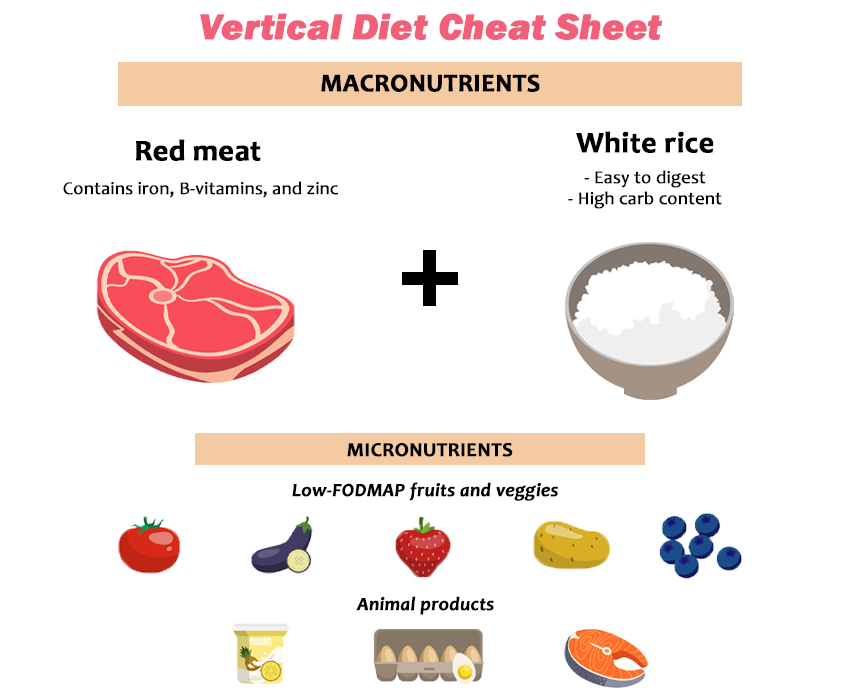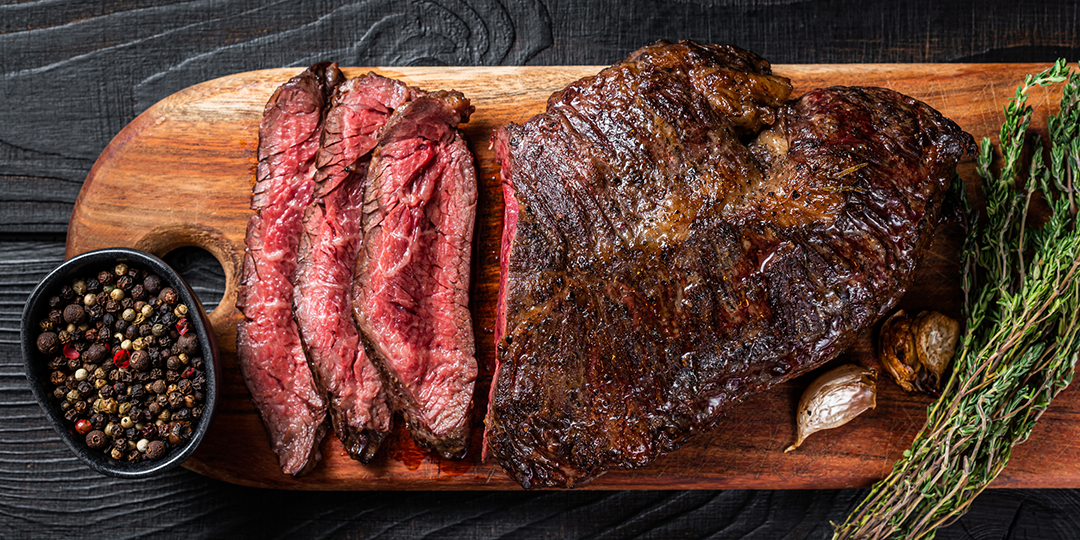The Vertical Diet, created by professional bodybuilder and powerlifter Stan Efferding, claims to improve athletic performance and body composition. Originally developed for high-level athletes, it is now gaining traction among average gym-goers.
Note that there isn’t much research to support the founders’ claims. Many athletes and bodybuilders, like your average gym-going rat, do just as well or better than eating a more balanced diet. There are also groups of people who should avoid vertical dieting altogether (more on this later).
Why is it called a vertical diet?
To understand vertical dieting, it’s important to understand what a “horizontal diet” is.
A horizontal diet focuses on consuming a wide range of nutrient-dense foods from numerous food groups, including fruits, vegetables, grains, legumes, and protein. In a sense, this diet encourages you to “eat the rainbow” and consume a variety of nutrients that are unlikely to all be found in a single food group.
Vertical dieting is the opposite. Instead of combining many groups of foods, you consume large amounts of a few foods that are relatively easy to digest. Following this diet simplifies meal planning, meeting energy needs, and absorbing nutrients.
While the vertical diet may be effective for certain groups of people, such as those with certain gastrointestinal conditions, there is no research to support similar benefits for others.
How do you implement a vertical diet?
If you are planning a vertical diet, it is important to understand that there are some foods that are not allowed. This diet includes various restrictions and follows some of the rules of the low FODMAP diet. (FODMAP stands for Fermentable Oligosaccharides, Disaccharides, Monosaccharides, and Polyalcohols, a specific group of carbohydrates that are poorly absorbed in the intestines and can exacerbate digestive problems.)
Once you understand the rules, rely on calorie counting to make sure you’re taking in extra calories to promote muscle gain. So if your focus is on weight loss, vertical dieting is not for you.
Let’s take a look at some of the basics of vertical dieting.
Who would want to follow a vertical diet?

This diet is marketed to people who want to build and “work” their muscles. It helps simplify the process of consuming more calories quickly and easily. It also makes it relatively easy to track and change your macronutrient intake, making it easy to raise or lower levels.
Vertical dieting can be useful for athletes and bodybuilders who need to closely monitor and regularly adjust their food intake and progress. Health-wise, this diet is fine for young, healthy people who are focused on muscle growth, as they can tolerate the effects of large amounts of beef and rice while still getting nutrients from side dishes.
However, you can also learn how to track and modify your intake while consuming a variety of foods that are less restrictive and have more benefits. This may be more cost-effective and fun.
Who should avoid vertical dieting?
Vertical dieting is not recommended for people who:
Are prone to heart problems Are eating a moderate amount of calories Are trying to lose weight
It is also not suitable for people with a family history of colon cancer, as it focuses on red meat intake. This is because high red meat intake has been shown to increase the incidence of colon cancer. Additionally, white rice has a high glycemic index (meaning it can cause blood sugar levels to rise quickly), so it’s not a good choice for people who want to manage their blood sugar levels, such as diabetics.
Foods to take during a vertical diet
The majority of the calorie intake from a vertical diet is thought to come from two sources:

Efferding chose white rice for its ease of digestion and high carbohydrate content, and red meat for its iron, B vitamins and zinc content.
The vertical diet also allows for a variety of “micronutrient” foods, including:
Low FODMAP vegetables (tomatoes, kale, sweet potatoes, eggplant, etc.) Low FODMAP fruits (blueberries, strawberries, unripe bananas) Animal foods such as eggs, stock, full-fat dairy products, fatty fish Legumes and oats (but , after soaking and fermenting
Foods to avoid on a vertical diet
Foods to avoid include:
High FODMAP vegetables (such as asparagus, Brussels sprouts, and cauliflower) High FODMAP fruits (such as apples, cherries, and watermelon) Grains Legumes Sugars or sugar alcohols Processed vegetable oils
Coffee and alkaline water are also prohibited on the vertical diet.
Vertical diet benefits

May help increase mass
The main focus of the diet is to build muscle mass easily and quickly. While this works well for young gym-goers, it’s probably not very sustainable in the long run.
May be useful for people with food sensitivities
This diet focuses on consuming low FODMAP foods that are easy to digest for people with food sensitivities. However, in medical practice, low FODMAP diets are intended for short-term use, with the goal of later reintroducing certain foods into the diet.
Additionally, the low FODMAP nature of the diet eliminates prebiotics, which feed the probiotics that make up the microbiome, which can further impact overall gut health, says dietitian Cordiaris Musola. Mr. Casago says.
Disadvantages of vertical dieting
While some people may experience desirable results with vertical dieting, there are several reasons why many others don’t have the same success.
is restrictive
Dr. Efferding claims that consuming fewer types of foods is optimal for digestion and absorption of nutrients, which in turn improves body composition, gut health, and metabolism. However, not all of these claims are backed by science.
Following a restrictive dietary approach can lead to nutrient deficiencies and gut health issues. Research shows that your gut may function best with a variety of nutrients.
may be difficult to follow
“Vertical dieting can help bodybuilders consume enough food to increase muscle mass without experiencing any signs of gastrointestinal discomfort, but it’s not an approach that most people can stick with. That’s for sure,” Musola-Kasago said. “Costs can be high because so many foods are restricted.”
She added that variety, accessibility, and affordability are key factors for lasting results. “Start with your favorite foods and look for opportunities within your personal eating patterns,” she says. “Small changes often produce the biggest results.”
The final verdict on vertical dieting
Overall, there is no one-size-fits-all approach when it comes to diet. Although the vertical diet is restrictive and unrealistic for many people, there are many other ways to build muscle that are more flexible and enjoyable.





